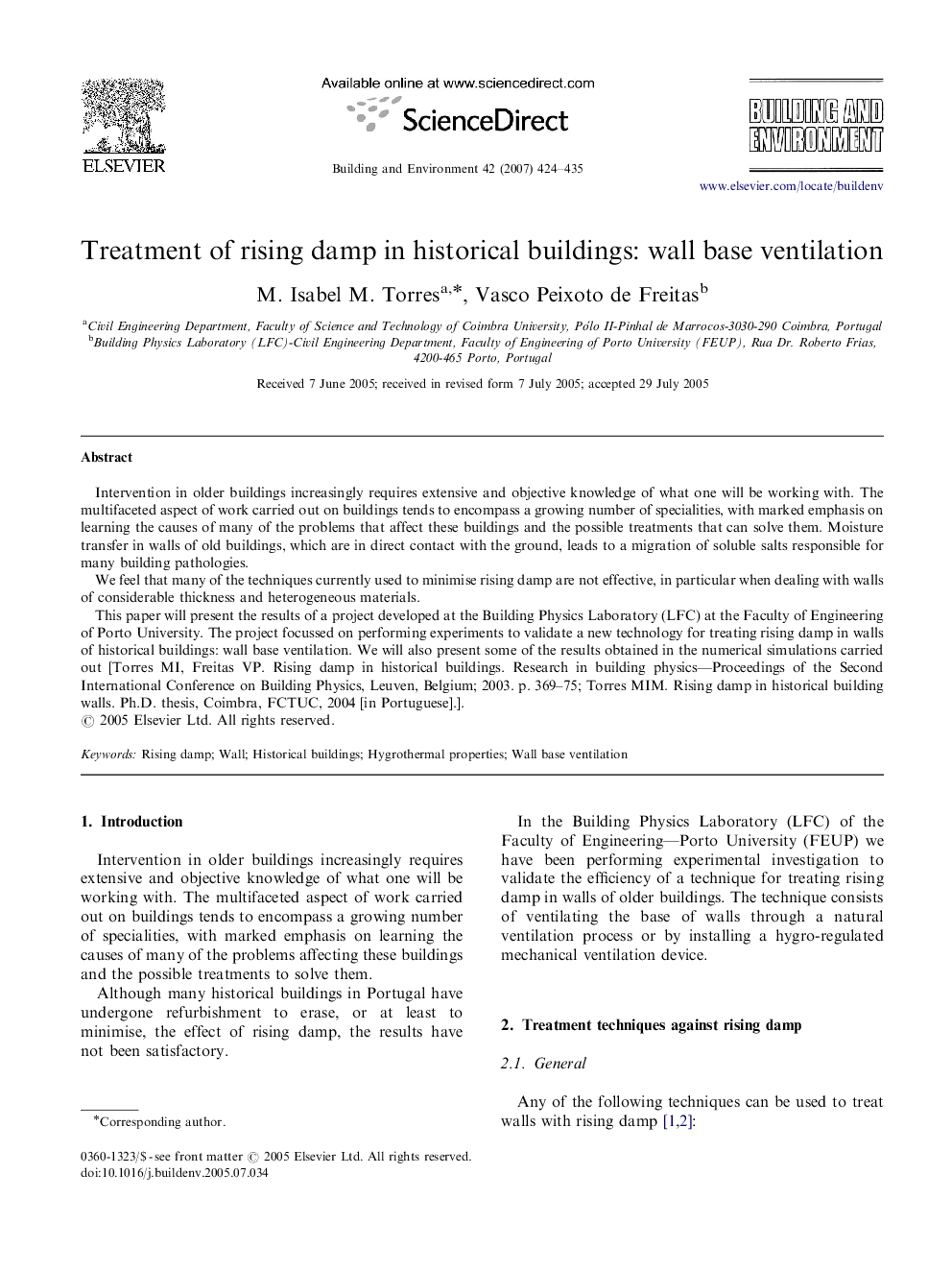| Article ID | Journal | Published Year | Pages | File Type |
|---|---|---|---|---|
| 249457 | Building and Environment | 2007 | 12 Pages |
Intervention in older buildings increasingly requires extensive and objective knowledge of what one will be working with. The multifaceted aspect of work carried out on buildings tends to encompass a growing number of specialities, with marked emphasis on learning the causes of many of the problems that affect these buildings and the possible treatments that can solve them. Moisture transfer in walls of old buildings, which are in direct contact with the ground, leads to a migration of soluble salts responsible for many building pathologies.We feel that many of the techniques currently used to minimise rising damp are not effective, in particular when dealing with walls of considerable thickness and heterogeneous materials.This paper will present the results of a project developed at the Building Physics Laboratory (LFC) at the Faculty of Engineering of Porto University. The project focussed on performing experiments to validate a new technology for treating rising damp in walls of historical buildings: wall base ventilation. We will also present some of the results obtained in the numerical simulations carried out [Torres MI, Freitas VP. Rising damp in historical buildings. Research in building physics—Proceedings of the Second International Conference on Building Physics, Leuven, Belgium; 2003. p. 369–75; Torres MIM. Rising damp in historical building walls. Ph.D. thesis, Coimbra, FCTUC, 2004 [in Portuguese].].
